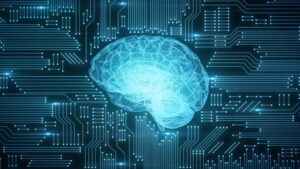The Harvard Gazette has a story today about the deleterious effect AI has on human empathy. Here’s the first few paragraphs:
Artificial intelligence holds the promise of optimizing many aspects of life, from education and medical research to business and the arts. But some applications may have a deeply worrisome effect on human relationships.
During a talk March 20 at Harvard Law School, MIT sociologist Sherry Turkle, whose books include “Reclaiming Conversation” and “The Empathy Diaries,” outlined her concerns over the fact that individuals are starting to turn to generative AI chatbots to ease loneliness, a rising public health dilemma across the nation. The technology is not solving this problem but adding to it by warping our ability to empathize with others and to appreciate the value of real interpersonal connection, she said.
Turkle, also a trained psychotherapist, said it’s “the greatest assault on empathy” she’s ever seen.

Empathy is critically important to flourishing. It is an essential aspect of caring for the Other, which, in turn, contributes to personal autonomy. Empathy is the result, par excellence, of the ability of the right hemisphere to interconnect with the living world. Rather than develop this blog post from scratch, the following material is lifted from my last book. Again, the usual warning that the discussion of the divided brain is very generalized and simplified. The two hemispheres always interact in more complicated ways.
Carl Rogers, an eminent American psychologist, defines empathy in an action-oriented way.
An empathic way of being with another person has several facets. It means entering the private perceptual world of the other and becoming truly at home in it. It involves being sensitive, moment by moment, to the changing felt meaning which flows in this other person, to the fear or tenderness or rage or confusion or whatever the other person is experiencing. It means to be temporarily living in the others perceptual world and moving in it delicately without making judgments; it means sensing meanings of which the other is scarcely aware, but not trying to uncover totally unconscious feelings because this can be too threatening.
This definition shows the close relationship between empathy and connectedness; empathy is a form of connection that enables an actor to become aware of the other’s concerns—to get inside of their head in a metaphorical sense. Empathy has been called listening with the heart.
Empathy goes beyond the mere acquisition and acknowledgment of the other’s existence and condition. Empathy combines two successive actions. The first is to connect with the other while suspending one’s presuppositions so that you can see the other as she would see herself. The second is to act according to what is missing in the revealed other, that is, authentic care. Psychotherapy is a formalized form of empathy. Friendship involves a more informal, unstructured relationship, and is hampered by the reduction to a category on social media apps.
Rogers’s definition resonates with McGilchrist, who places empathy as an outcome of the general way the right-brain captures the world. The right hemisphere’s openness to interconnectedness creates an interest in others and the subject’s relationships to them that is the basis for the empathetic character of authentic action. This hemisphere “plays an important role in what is known as ‘theory of mind’, a capacity to put oneself in another’s position and see what is going on in that person’s mind”. It perceives objects in its field of view as personal, related, and alive, as contrasted to the abstract, impersonal, and non-living way the left holds them. In general, the right adds meaning arising out of some concern about what it sees. Its memory of past events associated with the present scene is “episodic” and “emotionally-charged.” The imitative feature of the right hemisphere functions only with living beings, not with mechanisms. The right also is the source of attributions of the others’ state of mind, particularly their affective states. The right has far more emotional understanding than the left, and mediates social interactions. McGilchrist (2012) writes that people with right-brain, but not left-brain, injuries become unable to interact empathetically.
A machine can never be perceived in the same manner as a living human being. Nor can a machine exhibit empathy. It is no wonder that Turkle finds that AI does little to alleviate loneliness, and even may accentuate it. The divided-brain-model helps understand why. Loneliness is a feeling of being disconnected. Cognitively that means the right-hemisphere is relatively inactive and the left-brain is running the show at that time. It processes the incoming messages from the AI bot literally without the emotional charge that the right would provide. The listener must “know” at some level that she is not interacting with a human being and that the voice is coming from a source that cannot emphasize, but only offer a mechanical response to what inputs it is getting. I am not particularly lonely, having a rich relationship with my spouse, so have a limited sense of how it feels to be lonely. I do know that the mere presence of another human being does much to keep loneliness away. Most of all, there is nothing like a hug to dispel the loneliness blues. With all its marvelous smarts, that is something far beyond AI’s abilities.
Turkle ends with:
Tech executives and technologists who work with generative AI seem to share a common belief that because technology’s responses in an interaction are rooted in big data, it will always outperform human beings in providing satisfaction regardless of their expertise or training, Turkle said.
But vast quantities of data averaged to produce a probable or popular response doesn’t work for human psychology. What leads to lasting change is not a therapist delivering curated bits of information, “but from the nurturing of a relationship,” she said, noting that major healthcare corporations are now considering using chatbot therapists as the first option for patients in part because demand for human therapists far exceeds supply.